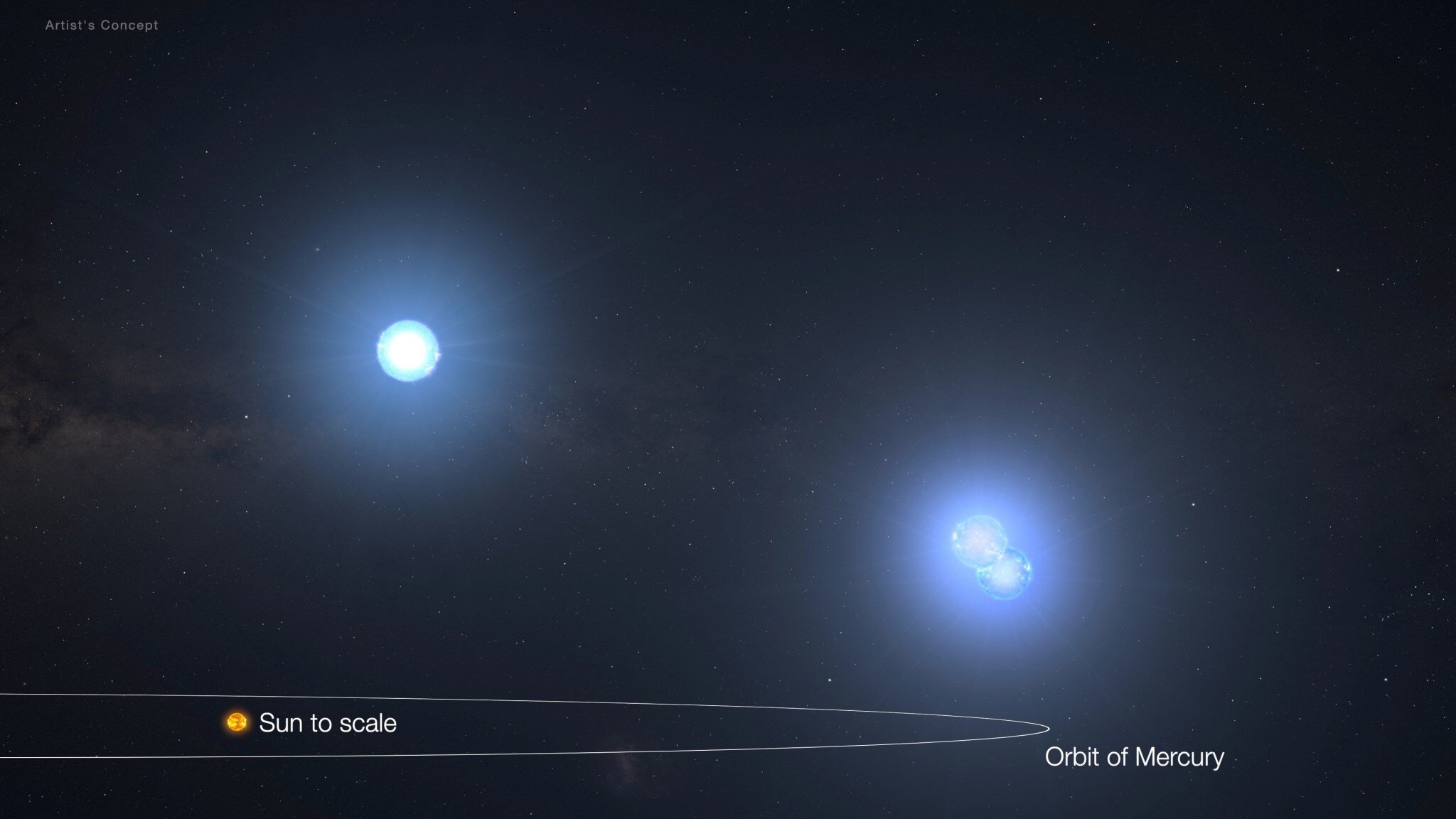An AI discovers this triple star system that breaks a new record
Follow us on Google News (click on ☆)
These three stars eclipse one another in a cosmic ballet observed by NASA's TESS satellite. This phenomenon has allowed scientists to precisely measure their orbits and study their potential evolution.

Illustration of the very close orbits of the three stars in the TIC 290061484 system. If they were at the center of our Solar System, their orbits would be smaller than Mercury's.
Credit: NASA's Goddard Space Flight Center
TIC 290061484 features twin stars orbiting in 1.8 days, accompanied by a third star orbiting around them in just 25 days. This system breaks a record set in 1956 for the shortest known external orbital period.
Amateurs and professionals, gathered in a citizen science project, collaborated to detect this rare formation. The variations in brightness captured by TESS revealed the eclipses between these stars.
Thanks to machine learning, patterns of light dimming were identified, then manually analyzed by volunteers. This cooperation led to the emergence of this extraordinary discovery in the constellation Cygnus.
This trio is exceptionally stable despite the close proximity of its stars. This stability might be explained by the fact that their orbits are almost coplanar. However, no planet seems able to form around these tight-knit bodies, except possibly at a very great distance.
Animation showing the successive eclipses of the three stars of TIC 290061484 as observed by TESS. The graph at the bottom tracks the system's brightness. Credit: NASA's Goddard Space Flight Center
In a few tens of millions of years, the inner stars will eventually merge and trigger a supernova. New instruments, such as the Roman Space Telescope, will soon offer better resolution to discover other equally intriguing stellar systems.
This future telescope could unveil even more complex systems, perhaps with half a dozen stars orbiting each other. Scientists also hope to find systems with even shorter orbital periods than those observed here.
What is a triple star system?
A triple star system is a group of three stars orbiting around a common center of mass. Unlike our Solar System, which contains just one star, these systems harbor multiple stars bound together by gravity.
In such a system, the stars can have varied configurations. For example, two stars might form a closely bound pair that orbits around a third, more distant star. These systems can be very stable, particularly when their orbits are coplanar, as is the case with TIC 290061484.
These systems are difficult to detect because they are often located at great distances. Observation techniques, such as mutual eclipses or brightness variations, allow these systems to be discovered. Artificial intelligence now plays a major role in their identification.